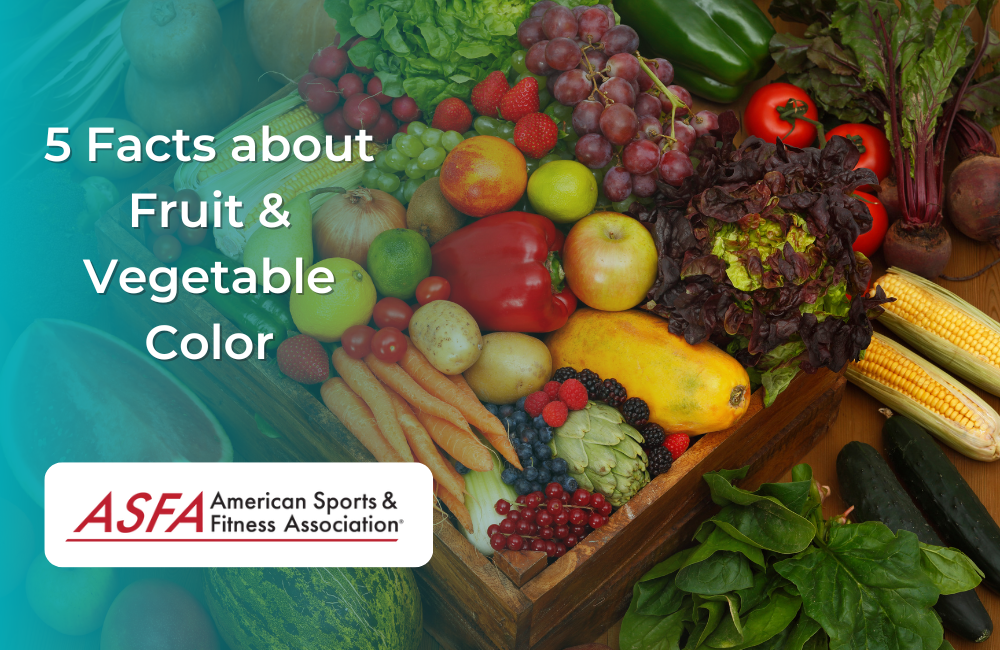Fruit and vegetables are often touted as being good for you. It's true—they're rich in nutrients and antioxidants. But did you know that the color of some fruits and vegetables can indicate freshness, ripeness, or even taste? Let's look at five facts regarding fruit and vegetable color.
Color is a matter of genetics and is key to ripeness and freshness. It's important to understand the color of your fruit because it can tell you a great deal about its quality, taste, and even nutritional value.
The color indicates how ripe or mature your fruit is at any given time. As fruits ripen, they change from green to yellow or orange as chlorophyll breaks down and other pigments (like anthocyanins) develop within them.
This color change means they are becoming sweeter as well--and sometimes more bitter! For example, green grapes contain high levels of malic acid; red grapes contain lower amounts than their green counterparts but still enough to give them some tartness; purple grapes have even less acidity than reds but pack one heckuva punch when it comes down to antioxidants too!
The color of skin, flesh, and seeds varies among plants. The amount of pigment in a plant decides its color. Plants produce pigments for protection against the sun and other environmental factors such as predators.
In some cases, pigments may be toxic to humans; however, humans can eat fruits with dyes without any health problems because these colors don't affect fruits' taste or nutritional value.
The color of the skin and flesh is determined by carotenoids, which are yellow-orange pigments that protect plants from ultraviolet light. Carotenoids are responsible for the colors of carrots, tomatoes, and pumpkins.
Color does not always indicate taste
Color is not always a reliable indicator of taste. The color of a fruit or vegetable can be modified by its environment and genetic makeup, so it's important to pay attention to other indicators of ripeness, freshness, and flavor when selecting produce at the market.
- Some fruits are genetically modified to produce consistent colors--for example, many bananas are dyed yellow before they're shipped out for sale because otherwise, they would naturally be greenish-yellow in color.
- Color can also indicate ripeness: green bell peppers are less ripe than red bell peppers; orange tomatoes are more ripe than green tomatoes, etcetera...
- When selecting produce, it's important to pay attention to color, texture, and smell. Ripe fruits will be firm and often have a slight give when you squeeze them gently; vegetables should be glossy and crisp.
Some fruits and vegetables are genetically modified to produce consistent colors. For example, bananas are naturally yellow when ripe, but many grocery stores sell green bananas because that's what people are used to seeing. Other examples include:
- Tomatoes with red flesh instead of orange or yellow
- Apples that don't turn brown when cut open (this is done by adding an enzyme)
- Potatoes that don't brown when you cook them
- Cucumbers that don't have white spots on their skin Corn that's been genetically modified to produce its pesticide
People don't like genetically modified foods because they're afraid of what might happen. For example, some think eating GMOs can cause cancer or other diseases. However, there isn't any scientific evidence to support this claim.
Carrots turn a bright orange when they're cooked, while broccoli turns a greenish-blue color. Spinach goes from dark to bright green, and squash turns yellow when cooked. Corn also gets brighter as it roasts in the oven or on the cob over an open flame; this is why sweet corn is such an eye-catching color!
When food is cooked, it loses some of its moisture. The color of the food may change because of this water loss; for example, the meat gets a darker color as it cooks.
Eating a variety of colorful fruits and vegetables is healthy for you. Eating colorful fruits and vegetables can help you get the necessary nutrients, such as fiber and antioxidants. It's also been shown that consuming more colorful foods enables you to feel full longer, which can lead to weight loss or maintaining a healthy weight if that's your goal.
- Eat plenty of red-orange foods like tomatoes, sweet potatoes (and other orange root vegetables), carrots, and bell peppers! These foods are rich in beta carotene - an antioxidant that may reduce the risk of developing certain cancers such as lung cancer or pancreatic cancer.*
- Eat more yellow/orange veggies like sweet corn kernels or yellow squash pasta sauce made with sunflower seeds instead than cheese.*
Conclusion
We hope you've learned something new today and will be inspired to eat more fruits and vegetables. Color is a matter of genetics and is key to ripeness and freshness. The color of skin, flesh, and seeds varies among plants. Color does not always indicate taste. Some fruits and vegetables are genetically modified to produce consistent colors. The color of some fruits and vegetables changes depending on how they're cooked.





